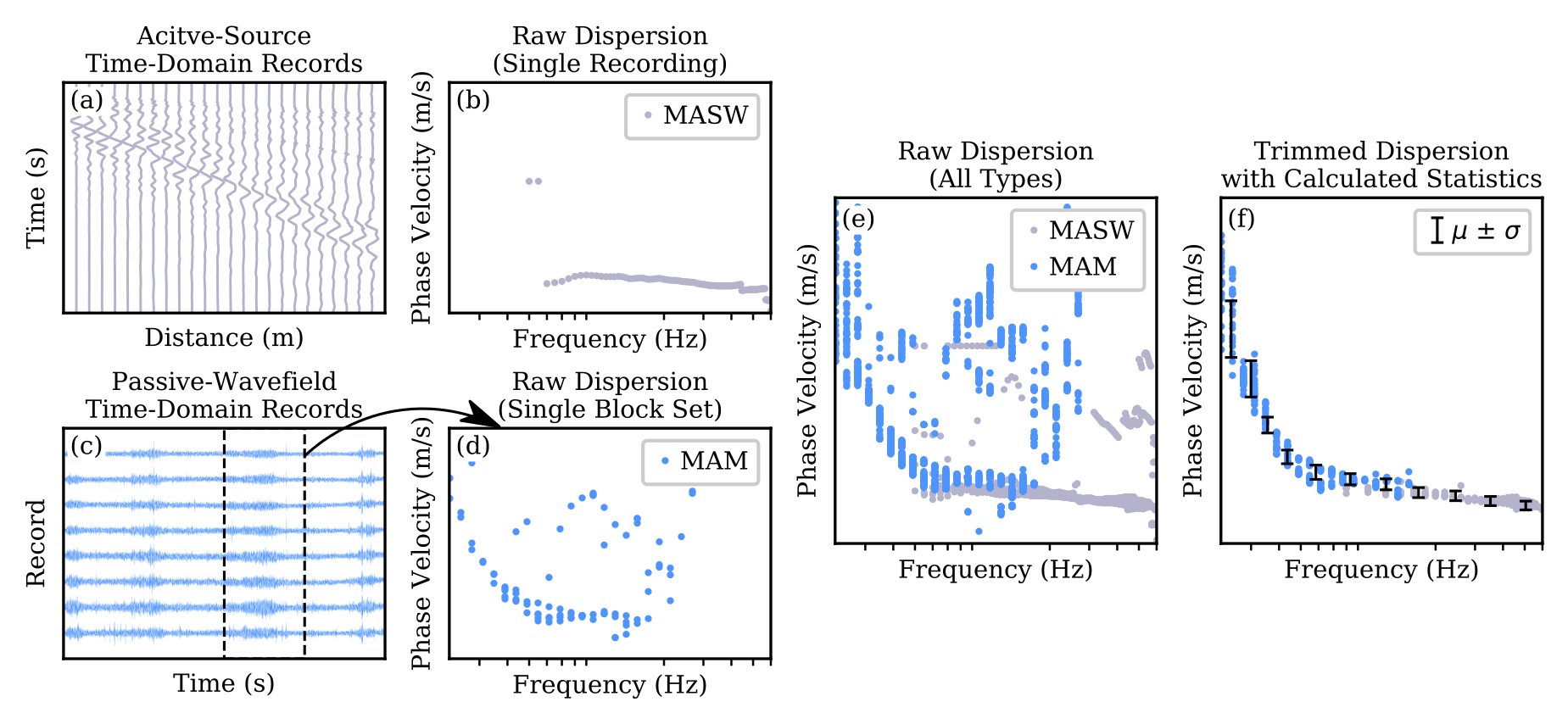
SWprocess: A Workflow for Developing Robust Estimates of Surface Wave Dispersion Uncertainty
Non-invasive surface wave methods are increasingly being used as the primary technique for estimating a site’s small-strain shear wave velocity (Vs). Yet, in comparison to invasive methods, non-invasive surface wave methods suffer from highly variable standards of practice, with each company/group/analyst estimating surface wave dispersion data, quantifying its uncertainty (or ignoring it in many cases), and performing inversions to obtain Vs profiles in their own unique manner. In response, this work presents a well-documented, production-tested, and easy-to-adopt workflow for developing estimates of experimental surface wave dispersion data with robust measures of uncertainty. This is a key step required for propagating dispersion uncertainty forward into the estimates of Vs derived from inversion. The paper focuses on the two most common applications of surface wave testing; the first, where only active-source testing has been performed, and the second, where both active-source and passive-wavefield testing has been performed. In both cases, clear guidance is provided on the steps to transform experimentally acquired waveforms into estimates of the site’s surface wave dispersion data and quantify its uncertainty. In particular, changes to surface wave data acquisition and processing are shown to affect the resulting experimental dispersion data, thereby highlighting their importance when quantifying uncertainty. In addition, this work is accompanied by an open-source Python package, swprocess, and associated Jupyter workflows to enable the reader to easily adopt the recommendations presented herein. It is hoped that these recommendations will lead to further discussions about developing standards of practice for surface wave data acquisition, processing, and inversion.
